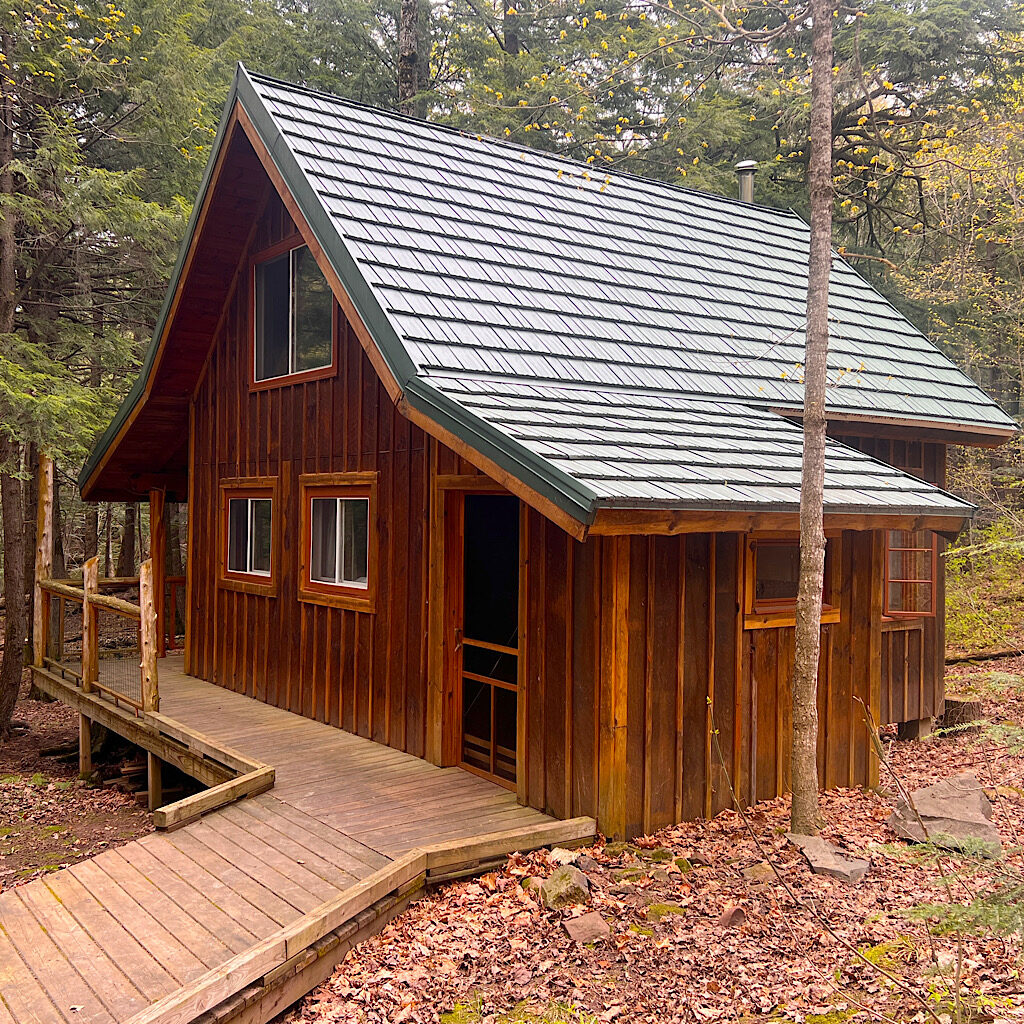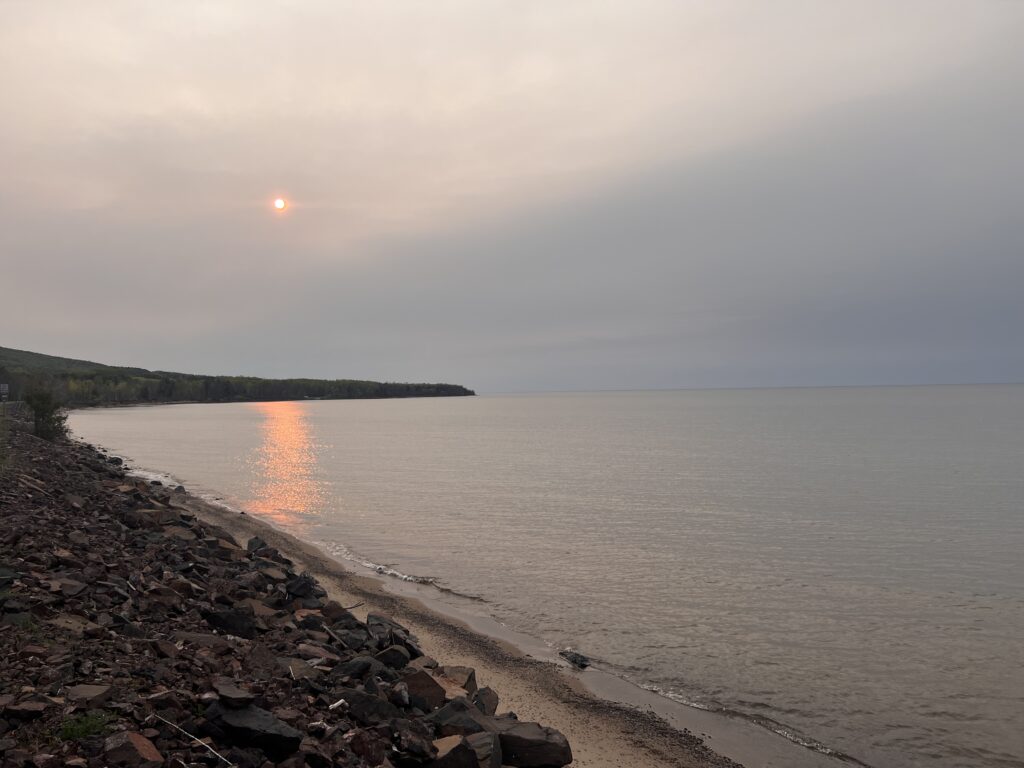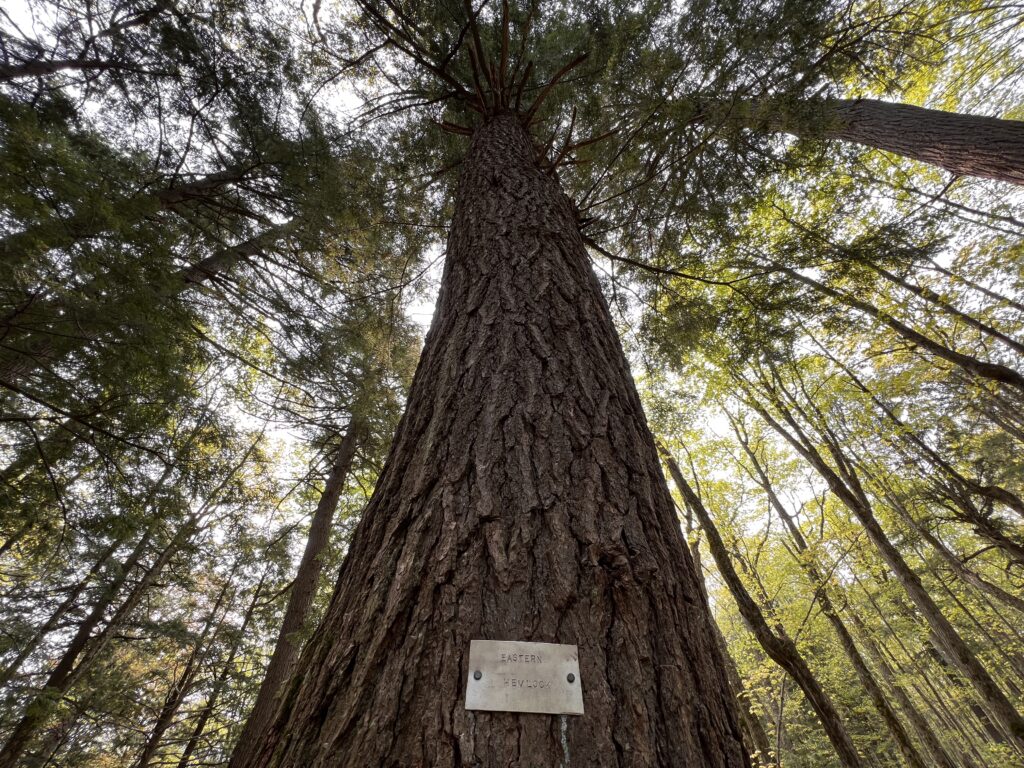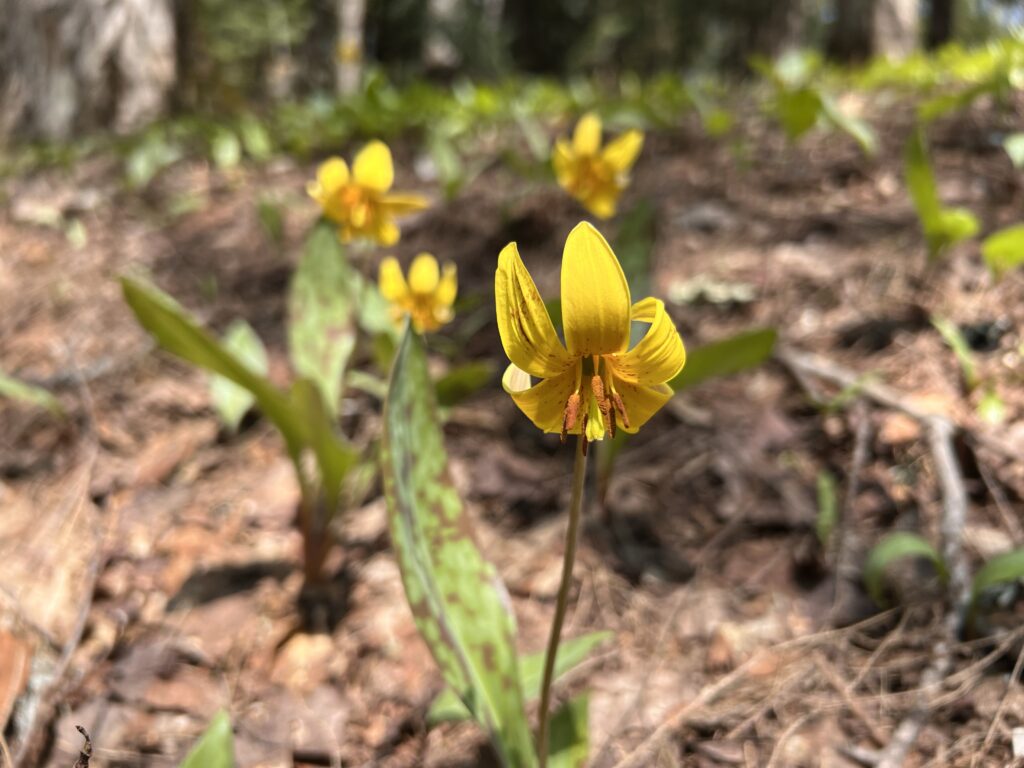NORTH COUNTRY TRAIL
NORTH COUNTRY TRAIL
Porcupine Mountains
Wilderness State Park
Porcupine Mountains Wilderness State Park
Affectionately known as the “Porkies,” this Lake Superior wilderness in Michigan’s Upper Peninsula boasts the largest primary stand of hemlock in the Great Lakes along with hundreds of cascades on volcanic rock.

Porcupine Mountains, Michigan
It was easy walking through the “Porkies” in Michigan’s Upper Peninsula, but strikingly soulful.

making art in the Porcupine Mountains
It was early spring loud with birds and falls for my Artist-in-Residence at the Porcupine Mountains.

notes from the Porkies
I hiked and recorded sound but letting the Mountains speak to me in its own way, was pure magic.

Porcupine Mountains, Michigan
It was easy walking through the “Porkies” in Michigan’s Upper Peninsula, but strikingly soulful.

making art in the Porcupine Mountains
It was early spring loud with birds and falls for my Artist-in-Residence at the Porcupine Mountains.

notes from the Porkies
I hiked and recorded sound but letting the Mountains speak to me in its own way, was pure magic.

Artist-in-Residence
Spring is like a glimpse into heaven and offers us a chance to be renewed. It teaches us about life’s insatiable and insistent demand that we start over each year and open ourselves to the wonder of hope.
Alison Young, Artist-in-Residence | Porcupine Mountains Wilderness State Park, Michigan
What is the sound of wind in early spring, pushing through the tall graceful hemlocks, their fanning arms caressing all beneath them?
Or your feet crunching through last autumn’s leaves, a bleached mat beneath quickly melting snow as thousands of ephemerals urgently reach to the warming sun?
Spring in the Porcupine Mountains is loud – and raucous.
It’s a twitchy chorus of colorful migrating warblers and silvery cascades of spring melt rushing over ancient lava flows. The sound of the season – when one would be wise to pack both a bug net and snowshoes – urgently demands our attention.
Whenever one hears a wood thrush she is young, and Nature is in her spring; wherever she hears it, it is a new world and a free country, and the gates of heaven are not shut against her.
Henry David Thoreau
And it’s particularly sensual in the Porcupine Mountains Wilderness State Park, where billion-year-old lava flow meets primary forest; where towering hemlock and hardy oak create mini microclimates; where trails bring us near, but not quite within, secret recesses teeming with life.
Affectionately knows as the “Porkies,” these mountains abut Lake Superior on the northwestern part of Michigan’s Upper Peninsula. The park was established in 1945 to save the largest stand of hemlock and hardwood in the Great Lakes, 35,000 acres to be exact.
Untouched virgin woodland is tucked deep under an escarpment of volcanic basalt, dramatically sculpted by the most recent re-advance of the Wisconsin Glacial Episode, aptly called the Greatlakean.
This ridge-line is perfectly situated as if a viewing platform to a “forest museum,” one filled with an ecologically diverse system including gray wolf and coyote, beaver and otter, fisher, marten, and minks, bobcats, lynx and cougar, 200 black bears, and, thousands of migrating and resident birds.
The greening of the earth, the sun’s warmth, the ecstatic singing make everything feel easier, as if all things are possible.
Alison Young
That includes the passerine or perching warblers, the males wearing their most colorful outfits only in springtime. Thirty-four different species have been identified in Michigan with songs as buzzy as the insects they eat.
Their brilliant spring plumage contrast with the spring’s subtle hue, an inversion of autumn’s. Less brilliant, maybe, but can be likened to a promise of new life, leaves subtlety delicate in fluorescent lime or simply a smudgy brown fuzz against a Robin’s egg blue sky.
Here in the Porcupine Mountains, nature is boisterous when in her spring, but that moment like all of life, is fleeting and brief. It’s so transitory, we could almost miss out if we’re not fully present.

Spring is like a glimpse into heaven and offers us a chance to be renewed. It teaches us about life’s insatiable and insistent demand that we start over each year and open ourselves to the wonder of hope.
Alison Young, Artist-in-Residence | Porcupine Mountains Wilderness State Park, Michigan
What is the sound of wind in early spring, pushing through the tall graceful hemlocks, their fanning arms caressing all beneath them?
Or your feet crunching through last autumn’s leaves, a bleached mat beneath quickly melting snow as thousands of ephemerals urgently reach to the warming sun?
Spring in the Porcupine Mountains is loud – and raucous.
It’s a twitchy chorus of colorful migrating warblers and silvery cascades of spring melt rushing over ancient lava flows. The sound of the season – when one would be wise to pack both a bug net and snowshoes – urgently demands our attention.

Whenever one hears a wood thrush she is young, and Nature is in her spring; wherever she hears it, it is a new world and a free country, and the gates of heaven are not shut against her.
Henry David Thoreau
And it’s particularly sensual in the Porcupine Mountains Wilderness State Park, where billion-year-old lava flow meets primary forest; where towering hemlock and hardy oak create mini microclimates; where trails bring us near, but not quite within, secret recesses teeming with life.
Affectionately knows as the “Porkies,” these mountains abut Lake Superior on the northwestern part of Michigan’s Upper Peninsula. The park was established in 1945 to save the largest stand of hemlock and hardwood in the Great Lakes, 35,000 acres to be exact.
Untouched virgin woodland is tucked deep under an escarpment of volcanic basalt, dramatically sculpted by the most recent re-advance of the Wisconsin Glacial Episode, aptly called the Greatlakean.
This ridge-line is perfectly situated as if a viewing platform to a “forest museum,” one filled with an ecologically diverse system including gray wolf and coyote, beaver and otter, fisher, marten, and minks, bobcats, lynx and cougar, 200 black bears, and, thousands of migrating and resident birds.

The greening of the earth, the sun’s warmth, the ecstatic singing make everything feel easier, as if all things are possible.
Alison Young
That includes the passerine or perching warblers, the males wearing their most colorful outfits only in springtime. Thirty-four different species have been identified in Michigan with songs as buzzy as the insects they eat.
Their brilliant spring plumage contrast with the spring’s subtle hue, an inversion of autumn’s. Less brilliant, maybe, but can be likened to a promise of new life, leaves subtlety delicate in fluorescent lime or simply a smudgy brown fuzz against a Robin’s egg blue sky.
Here in the Porcupine Mountains, nature is boisterous when in her spring, but that moment like all of life, is fleeting and brief. It’s so transitory, we could almost miss out if we’re not fully present.
Alison Young
 Alison Young is an audio storyteller, combining personal essay with found sound.
Alison Young is an audio storyteller, combining personal essay with found sound.
With over 12,000 miles logged as a backpacker on six continents and a background as an award winning professional musician and syndicated radio host, her artistic practice reflects an enduring curiosity in how we perceive the world aurally.
Her art form of “Audio Narratives” captures a time and place in sound. Through carefully chosen words, impeccable vocal inflection plus the precise placement of clips from the natural world, these essays-in-sound spark the imagination, causing listeners to fill in visual gaps and create their own unique experiences. You might describe an audio narrative’s impact like “a picture book read aloud.”
Alison Young’s audio narratives are heard widely on the Blissful Hiker™ podcast, which has received over 90,000 downloads. She is thrilled to have been invited to the Porcupine Mountains Wilderness as an Artist-in-Residence to immerse herself in this vividly wild soundscape.
Alison young

Alison Young is an audio storyteller, combining personal essay with found sound.
With over 12,000 miles logged as a backpacker on six continents and a background as an award winning professional musician and syndicated radio host, her artistic practice reflects an enduring curiosity in how we perceive the world aurally.
Her art form of “Audio Narratives” captures a time and place in sound. Through carefully chosen words, impeccable vocal inflection plus the precise placement of clips from the natural world, these essays-in-sound spark the imagination, causing listeners to fill in visual gaps and create their own unique experiences.
You might describe an audio narrative’s impact like “a picture book read aloud.”
Alison Young’s audio narratives are heard widely on the Blissful Hiker™ podcast, which has received over 90,000 downloads.
She is thrilled to have been invited to the Porcupine Mountains Wilderness as an Artist-in-Residence to immerse herself in this vividly wild soundscape.
Alison Young
 Alison Young is an audio storyteller, combining personal essay with found sound.
Alison Young is an audio storyteller, combining personal essay with found sound.
With over 12,000 miles logged as a backpacker on six continents and a background as an award winning professional musician and syndicated radio host, her artistic practice reflects an enduring curiosity in how we perceive the world aurally.
Her art form of “Audio Narratives” captures a time and place in sound. Through carefully chosen words, impeccable vocal inflection plus the precise placement of clips from the natural world, these essays-in-sound spark the imagination, causing listeners to fill in visual gaps and create their own unique experiences. You might describe an audio narrative’s impact like “a picture book read aloud.”
Alison Young’s audio narratives are heard widely on the Blissful Hiker™ podcast, which has received over 90,000 downloads. She is thrilled to have been invited to the Porcupine Mountains Wilderness as an Artist-in-Residence to immerse herself in this vividly wild soundscape.


